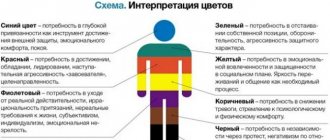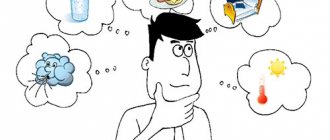Adviсe
- Why is communication necessary?
- Types of communication needs
- Communication deficit: consequences
- The need for communication in children, adolescents and adults
Few people imagine their life without friends! We are constantly in a team, we strive to meet new people, join another company and expand our social circle. Loneliness is not attractive to anyone, no matter our temperament or character. But why do people have a need to communicate? How is it different in adults and children? And what types of communication are there?
Why is communication necessary?
Communication is one of the main human needs, the satisfaction of which determines our emotional state. But what role does communication play in our lives?
Emotional exchange.
Through communication, we convey our feelings, emotions, experiences and worries. During the dialogue, the other person does the same, due to which an emotional exchange occurs. How often do we notice that the mood of another is transmitted to us, and this effect is achieved solely due to the exchange of feelings and emotions, and this happens unconsciously. In the process of communication, we either increase the severity of the experience or decrease it.
Have you ever wondered why solitary confinement is one of the harshest punishments? It's all about the absence of an interlocutor.
Emotional support.
Every person needs recognition in society. It is important for us to know that we are valued, loved and respected. Such confidence gives us strength, lifts our spirits and allows us to overcome even the most difficult obstacles in life!
Evaluation support.
All people need approval and support. It is important for us to evaluate other people's actions, actions, words or behavior. Through communication, we make comparisons, conclusions, conclusions and changes in our lives.
Information support.
Through speech and means of communication, we gain knowledge about the world around us, expand our horizons, and become a harmonious and highly developed personality. Thanks to communication, we receive information that allows us to behave correctly and be prepared for different life situations.
Every person has a need for communication, and our physical and emotional state depends on its satisfaction.
Maslow's pyramid
American psychologist Abraham Maslow created his own theory of the hierarchy of needs, using the example of which we can briefly go through the seven steps, get acquainted with the needs of the individual and their significance in life.
So let's start from the basics:
- physiological needs are primarily important: food, drink, shelter, and so on;
- the need to feel safe;
- the need to love and be loved, significant for certain people;
- need for success, recognition, approval;
- the need to acquire special skills and abilities, self-improvement, knowledge of the world and oneself;
- the need for beauty, namely: comfort, cleanliness, order, beauty, and so on;
- peak in self-knowledge, evolution of abilities and talents, self-realization, finding your own path, implementing your goals and objectives.
Now we have an understanding of people's needs. They force each individual and society as a whole to move forward, to develop. Next, we will learn in more detail what relates to social needs.
Types of communication needs
In a state of anxiety and deep emotion, even uncommunicative people become talkative. Internal conflict, fears, struggle and terrible excitement - all this contributes to the rapid emergence of a new topic of conversation. Depending on what a person wants to get as a result, communication is divided into the following types:
Safety.
Fear constrains and at the same time encourages a person to experience a strong need for communication. Strangers start a fascinating conversation only because of the appearance of excitement and worries. Such a need does not in every case give good results, because in this way we can say a lot of unnecessary things, which we would never do under normal circumstances!
Dominance.
This need to start a conversation arises in people who are powerful in character and characteristics, with strong leadership traits. It is aimed at subordinating another to your views, thoughts, tastes and feelings. Dominance in communication brings satisfaction in cases where the other person feels the need to submit. If two leaders encounter a need for dominance in a conversation, then conflict cannot be avoided. It is also difficult to communicate with two other opposites - people who need subordination.
Expression of individuality.
A person who feels the need to communicate in order to draw the attention of others to his individuality strives to express his character, his unusual mindset, his attitude to life. Such people are extremely vulnerable and vulnerable during a conversation, because denial or expression of a different position by his interlocutor causes indignation, bewilderment and even deep disappointment.
Prestige.
To be recognized in society, to receive praise and earn respect is the desire of many people. Often this need is clearly manifested in communication. From the conversation, it becomes clear what the person’s motives are, what he wants to say by this and why he chose this particular method of communication. If you do not control this need, you can lose friends and even ruin your relationship with them.
In order for communication to be harmonious, pleasant and bring true pleasure to both parties, it is important to first think about the interests of the other.
Cognition.
Thanks to communication, we gain new knowledge, information on various issues, explore topics and delve deeper into specialized topics. The need for communication often arises at the moment when we need to receive an answer to a question that has arisen. Satisfaction comes the moment we achieve a goal.
Patronage.
Patronage is a form of caring for other people. Some are eager to start a conversation to provide the help and support they need. However, with an immoderate desire to patronize, a desire for self-affirmation also manifests itself, so balance is important in everything.
Knowing the types of communication needs, it is easier to understand the essence of communication techniques and your role in this process.
Article:
As you know, L.S.
Vygotsky called the baby a maximally social being, since all his needs are satisfied by another person. “It’s clear from here,” writes L.S. Vygotsky, “why any need of an infant, whatever this need may be, gradually, in the process of development, becomes for him a need for another person, for contact with a person, for communication with him.” Analyzing the social situation of infant development, L.S. Vygotsky comes to the conclusion that, starting from the first days of life, the objective conditions of a child’s development create the necessary prerequisites for the emergence of a need for communication, which is social both in its content and in origin. This need forms the basis and driving force for all further mental development of the child 2. L.S. Vygotsky believed that the need for communication is formed during life on the basis of primary biological needs - food, warmth, movement, etc.
Developing the views of L.S. Vygotsky about the lifetime formation of a child’s need for communication, L.I. Bozovic believed that primary biological needs cannot be considered the basis for the development of this need, and put forward a number of arguments in defense of this statement. Firstly, if the need for communication were built only on the basis of biological needs, it could not be considered truly social during this period, since most animals have the same need for maternal care and dependence on the mother. Secondly, it remains unclear how the need for a mother, as a being who satisfies the child’s biological needs, develops into a social need for communication 3.
In addition, says L.I. Bozhovich, “the question arises whether the need for communication, so understood, can be a leading factor in the mental development of a child. Indeed, in this case, if communication is built around the child’s cleanliness, feeding, etc., then the true development of specifically human forms of the psyche will very soon come to a dead end. It is also difficult to imagine the possibility that these instinctive needs could develop into the highest spiritual needs of a person” 4. As a result, L.I. Bozovic hypothesizes the existence of another primary need, which is basic to the need for communication. Such a need, from her point of view, is the need for new experiences, observed approximately in the 3-5th week of a child’s life.
Although in the 70s of the twentieth century very little was known about this need, some of its main characteristics testified to its uniqueness and special significance for mental development. Thus, it has been shown that the need for new impressions is most clearly manifested in visual concentration during the transition of children from the neonatal period to infancy and changes all their behavior and the nature of emotional experiences (N.L. Figurin, R.Ya Lekhtman-Abramovich, etc. ). Let us consider this transition, associated with the emergence of a need for new experiences, in more detail.
The generally accepted point of view was that during the newborn period a child does not have even the most elementary images and ideas about the world around him, and his mental life can be defined as an alloy of undifferentiated emotionally charged sensations caused by organic needs and their satisfaction. At the same time, the inability to perceive objects of the external world deprives newborns of purposeful activity (W. Stern, K. Büller, K. Koffka).
It was assumed that this content of the mental life of newborns is determined by the level of maturity of their nervous system and the developmental situation, i.e. total dependence on the adult caring for the child. “Essentially,” writes L.I. Bozhovich, “newbornness is only a transitional stage from intrauterine to extrauterine existence, a period during which the newborn continues to develop like a fetus” 5.
By the end of the first month of life, when the neonatal period ends, the child is separated from the mother not only physically, but also mentally; it is believed that during this period he has an “individual mental life” (L.S. Vygotsky). The transition to individual mental life is physiologically connected with a certain level of development of the visual analyzer, and psychologically - with the development of a new need for impressions of the outside world.
During the transition to the period of infancy, active wakefulness appears in the child’s behavior, which is filled with the perception of stimuli from the outside world and is accompanied by a joyful emotional state. The main thing is that along with the need for new impressions, purposeful cognitive activity is born, the search for new impressions from objects of the external world.
What are the qualitative differences between the need for new experiences and other biological needs?
First of all, it is associated not with negative, but with positive emotions, therefore, it marks “the desire to achieve, and not the desire to get rid of something that interferes with the normal existence of the body” 6. In addition, unlike other organic needs, the need in new impressions it is as if insatiable. And, finally, the need for new impressions is of a promising nature; it is progressive by its very nature, since it is associated with the development of the human brain, due to the active cognitive activity of the subject.
L.I. Bozovic considers the need for impressions as basic for the development of social needs. Developing and becoming more complex, this primary need stimulates the child’s diverse and multifaceted research activity and, based on it, a cognitive need, “which pushes the child to enter wider and deeper into the environment and master it” 7.
A child cannot, without the help of adults, develop new forms of cognitive activity and satisfy his need for new, more complex information about the world around him. Therefore, to satisfy cognitive needs, the child needs other people, and, consequently, social forms of communication between the child and the adult develop. At the same time, L.I. Bozhovich notes that the need for communication, which arises on the basis of the need for new impressions and is initially inseparable from it, later acquires independent significance for the child and follows its own path of development.
Thus, in accordance with the views of L.I. Bozovic, the initial force that drives a child’s mental development is the need for new experiences. It participates in the formation of complex functional systems of the brain, then transforms into a cognitive need, which becomes the basis for the development of needs for communication and movement. The need for communication then develops on the basis of cooperation between an adult and a child, their joint activities, games, and various types of children's productive activities. And the need for movement becomes the need for mastery, assimilation of a system of skills and abilities 8.
M.I. also contributed to understanding the sources of the formation of the need for communication. Lisin in his concept of the genesis of communication in ontogenesis. M.I. Lisina agreed that the need for communication is based on other needs, but is not reducible to them. Firstly, the sources of the need for communication include the child’s organic needs. Being helpless and unable to independently satisfy the need for food, warmth, etc., the baby signals discomfort; his screams, movements, and facial expressions objectively become signals for the adults caring for him. Secondly, the source of the need for communication is the need for new experiences. From the point of view of satisfying this need, the other person turns out to be the most informative object in the baby’s surrounding world 9.
However, according to M.I. Lisina, the decisive factor for the emergence of the actual need for communication is the attitude of the adult towards the child, his position relative to the child. The fact is that from the very beginning the adult treats the child as a subject, an individual and behaves with him as a communication partner, in advance endowing his actions with meaning and meaning that they do not yet have. Such behavior of an adult, setting, as it were, the “zone of proximal development” (in the words of L.S. Vygotsky), actualizes the child’s perception of an adult not only as a passive object of the external world, but also as an actively acting subject, and also provides the child with the opportunity to discover subjective, personal qualities and in yourself.
Communication does not arise immediately after birth; it develops gradually and is observed in infants at the beginning of the second month of life under adequate upbringing conditions. M.I. Lisina identified the criteria for the formation of the need for communication: 1) the child’s attention and interest in the adult, reflecting his focus on knowing the adult; 2) emotional manifestations of the child in relation to the adult, expressing his assessment of the adult; 3) proactive actions of the child aimed at attracting the attention of an adult, for example, demonstrating his skills and abilities; 4) the appearance of the child’s sensitivity to the attitude of the adult 10.
The newborn period acts as a preparatory stage, during which the child learns to single out an adult and focus attention on him, which is the first sign of emerging communication. The appearance of a response smile to the influence of an adult marks the transition to the next stage: the emergence of the first situational-personal form of communication and the formation of the first leading activity - direct emotional communication 11. During the first 4-6 weeks of life, the baby gradually masters a variety of means to establish contact with an adult and at the end of the second month he himself begins to influence those around him, encouraging them to communicate. The main form of child behavior at this age is the “animation complex,” which includes motor animation, smiling, and vocalizations of pleasure. The adult reinforces the child’s initiative, responding to his calls with a smile and affectionate conversation, and emotional communication begins between them - an exchange of positive expressions. At the same time, the baby uses all expressive and facial means available to him to attract and retain the attention of an adult.
In a family environment, children already in the 2nd month of life are not limited to only reciprocal manifestations of love for an adult, but also show their own initiative. Thus, the components included in the “revitalization complex” ensure the child’s successful identification of an adult from the environment (freezing), the implementation of facial (smile) and specific vocal (hum) communication with him, as well as the active involvement of an adult in communication (movements of limbs and body).
The main content of the need for communication at this stage is the need for the friendly attention of an adult, whom the child perceives as a subject, a communication partner.
Direct emotional communication with an adult in the first half of life acts as the child’s leading activity 12. In direct emotional communication, other types of activity are formed: cognitive activity, objective actions. In the process of communication, the development of emotional and cognitive processes occurs, the formation of an affective connection with a close adult, and the fundamental principles of the child’s personality and self-awareness begin to take shape 13.
So, we have considered three different points of view on the sources of the need for communication within the framework of the cultural-historical approach in psychology. L.S. Vygotsky assumed that communication develops on the basis of the adult’s satisfaction of the child’s biological needs. L.I. Bozovic hypothesized the need for new experiences as basic for the development of social communication. M.I. Lisina combined these points of view and considered two sources of development of the need for communication - organic needs and the need for new impressions.
In foreign psychology, the prevailing idea is that a child is a social being from birth. Therefore, the main content of a child’s development in early childhood is considered to be the formation and natural change of his social and emotional relationships with other people, primarily with his mother. This emphasizes the inseparability of a child’s cognitive, social and emotional development.
Currently, there are many facts indicating the social competence of an infant starting from the newborn period. This is data on the presence of special abilities of visual and auditory perception, facial expressions, intermodal synthesis and imitation that are important for communication, as well as on the social signals sent by the child and his ability to participate in social interaction.
Peculiarities of visual perception of an infant. Babies begin to respond to people from the first days of life. Already in the first hours after birth, newborns prefer a human face located at a distance of twenty centimeters to other stimuli; This is exactly the distance the mother's face is when she holds the baby in her arms during feeding. It is hypothesized that infants have an innate “face” schema, 14 which is supported by evidence that infants prefer to look at stimuli that resemble a human face rather than at pictures with jumbled parts of a face, and are more interested in following a moving face than behind another moving object 15.
Sensitivity to the human face allows infants to recognize their mother's face very early. During the first hours after birth, there is a sensitive period when the newborn is awake and able to capture the individual features of the mother's face. A 1991 study by J. Walton and T. Bauer showed that as early as 7 hours after birth, babies prefer to look at a colored image of their mother on a computer screen rather than at the face of a stranger with hair of the same color. Preference did not relate to any particular feature, but to the face as such 16.
In Carpenter's 1974 experiments, two-week-old newborns were shown pictures of the faces of their mother and a stranger. Infants clearly preferred to look at a familiar face and often turned away completely from an unfamiliar image 17.
Even more impressive data were obtained in a study by I. Bushnell in 1989. 5-day-old infants were supported in a sitting position in front of a large white screen in which two slits were made at a distance of 12 cm from the midline on each side. The child’s mother and a woman he didn’t know, similar in color and length of hair to her, sat behind the screen so that their heads were visible through the slits. The demonstration of faces lasted 20 seconds. The results showed that infants preferred to look at their own mother's face 18.
When perceiving a person, it is not only the face that attracts the child's attention. At 3 months of age, infants are able to recognize a schematic representation of a walking person. In experiments, three- and five-month-old children observed the movement of 11 light points on a screen, depicting in one case a walking person, and in the other - chaotically moving points. Children saw the difference between these two configurations, preferring to look at the moving person 19.
It has been shown that infants view the human face and inanimate objects differently. Looking at the face, they make more sounds, begin to move their arms and legs, clench and unclench their fists, and make smooth movements 20.
Infants are able to distinguish the facial expressions of adults. In experiments with the presentation of photographs first with one and then with another facial expression, based on indicators of the oculomotor system and habituation, it was found that newborns are able to distinguish between expressions of happiness, sadness, surprise, and at a later age they distinguish between slides with expressions of joy, anger and neutral expression faces. However, infants are better at recognizing positive facial expressions than negative or neutral ones 21.
Features of the infant's auditory perception. Infants exhibit not only visual but also auditory preferences. There appears to be an innate ability to distinguish between speech and non-speech sounds. Children clearly prefer the human voice to sounds of the same pitch and volume, and they distinguish coherent speech from a collection of meaningless syllables.
Newborns are able to distinguish their mother's voice from the voices of other women. This may be based on the child’s memorization of the mother’s voice during the period of intrauterine development. Dekasper and Phifer tested this assumption in their 1980 study. During the last third of pregnancy, mothers read the same story aloud. On the first day of life, the newborn was allowed to listen through headphones to a recording of the same story performed by the mother and a stranger. While listening, the infants sucked on the pacifier, and it turned out that the rhythm of sucking was synchronized with the mother's speech faster than with the speech of a stranger, indicating prenatal formation of a preference for the mother's voice.
Infants prefer voices in the female range to voices in the male range (on average, one octave lower). This may be why adults and children tend to speak to babies in a higher voice, as if they “know” their preferences 22.
Features of visual-auditory coordination in an infant. The baby has an innate coordination between vision and hearing, which helps to recognize different people and, above all, recognize the mother.
In experiments by E. Spelke, it was shown that a few months after birth, infants can recognize the voices of their mother and father. Infants were allowed to listen to a tape recording of the voice of one of their parents through a loudspeaker that was positioned directly between the father and mother. The parents sat without talking and did not move their lips. Already 3-month-old babies looked at their mother when they heard their mother’s voice and at their father if his voice sounded. This suggests that three-month-old infants are able to form certain ideas about the voice and appearance of those who care for them.
Ability to imitate. Jean Piaget believed that babies cannot imitate the actions of another person until they reach the age of 6 months. However, in the well-known experiments of E. Meltzoff and M. Moore in 1977, it was found that newborns at two to three weeks of age are able to imitate a variety of adult facial movements, such as sticking out the tongue, opening and closing the mouth, and protruding the lips. Research by E. Wiener, conducted in 1986, confirmed these data and showed that newborns are able to imitate facial movements as early as seven days of age. In addition, they can also imitate finger movements, provided they have been able to observe adults performing similar movements.
Imitation in newborns is seen as another example of intermodal interaction, in which infants find correspondences between facial or hand movements observed in an adult and their own. Imitation in an infant serves to establish contact with parents.
Social cues in the infant's behavioral repertoire. Babies change their facial expressions already in the first weeks of life, and many parents interpret this as joy, anger, surprise, fear, sadness or interest 23. The first grimaces are reflexive in nature, but there is evidence that the baby from birth has a high degree of facial neuromuscular maturity , and the movements of the facial muscles are combined into recognizable configurations that have the meaning of social cues. One study videotaped infants playing with their mothers and unfamiliar adults. When viewing slides and videos, mothers were able to classify infant facial expressions as similar to universal adult facial expressions. Thus, it has been shown that infant facial expressions as early as 2–4 months can be easily recognized and classified using the same categories used to identify adult facial expressions. Parents are guided by the child's facial expression when interacting with him.
A baby's cry is also seen as an important social signal. It has been shown that crying is as unique a characteristic of a baby as fingerprints, and allows the mother to recognize her child already on the second day after birth. In addition, crying is heterogeneous and can convey different messages about the baby's condition, which the mother learns to recognize. Crying evokes not only a reaction of empathy and a desire to come to the rescue and show care, but also a feeling of emotional discomfort, prompting a nearby adult to eliminate the causes that caused it 24.
Among the infant's social signals that regulate interaction, two groups are distinguished: signals for attracting attention and initiating interaction, and signals for avoidance or the desire to stop interactions. In addition, “light” and “explicit” signals of both groups are distinguished. In the first month of life, signals of the newborn’s readiness to interact (“light” invitation) include animation on the face, opening of the arms with slightly bent fingers, raising the head and decreasing body movements, and freezing. Explicit signals include vocalizations, smiling, looking into the eyes, and cyclic movements of the arms and legs. Signals of a desire to interrupt interaction in the first month of life are considered to be pursing of the lips, a grimace on the face, a frown in the eyes, blinking or closing the eyes, looking away to the side, accompanied by increased sucking movements, whining, hiccups, squeezing the hands, bringing the hands to the head (neck, face) ), stretching of arms and legs, increased movement of legs. Clear signals of the child's desire to interrupt the interaction are a tearful face, whining, crying, coughing, looking away, turning away the head, pushing away, closed postures 25.
Ability for social interaction. In the 70s of the twentieth century, the use of video recordings and frame-by-frame analysis of video materials allowed psychologists to conclude that the child had innate abilities for social interaction and establishing a connection with his mother.
Mutual adjustment can be observed already in the feeding situation. During feeding, the infant has been found to nurse in bursts of 8 to 10 seconds, interrupted by pauses of 2 to 5 seconds. At the same time, from the point of view of breathing and rest, there is no need for these pauses. Most mothers, regardless of the nature of feeding (breast or bottle), pat the baby during pauses, stimulating him to continue sucking, although he begins to suck without any action from the mother. Since no physiological reasons for pauses have been identified, it has been hypothesized that they are necessary to establish the first dialogue between the infant and mother, which looks like an alternation of infant suckling, a pause, and tactile stimulation from the mother 26.
Katherine Garvey in 1977 studied the synchronization of actions between a mother and a 4-month-old infant during stereotypic play and found that the child engages in play by looking at the mother. He either looks at the adult showing him the “goat” or making “hands”, then looks away to the side, and then again directs it to the adult’s face, thereby helping to establish the pace and rhythm of the interaction. After 4 months, infants regulate interactions not only with their gaze, but also with gestures.
In the studies of D.L. Stern (1977) showed that the movements of a mother and a 3-month-old baby during interaction represent a very precise harmonious combination of mutual approaches and distances, reminiscent of a kind of “waltz”. The study of how mother and child look at each other during interaction made it possible to identify an organization of their actions that can be compared with the exchange of remarks between adult communication partners. It is based on the alternation of the roles of the actor and the observer, the sequential switching on and off of activity 27. To describe positive interaction in a dyad, studies use such descriptive characteristics as reciprocity, synchronicity, elusive ballet, and attunement to each other 28.
In the study of mother-infant interaction, special attention is paid to the study of intersubjectivity. In an experimental setting, the behavior of five infants between the ages of one week and six months was filmed in two situations: when the mother was near the child and when the mother was absent and a brightly colored toy lay in front of the child. According to the results of the experiments, it turned out that the behavior of infants in response to the presence of the mother and behavior in response to an inanimate object differ significantly. The baby produces, as it were, two modes of spontaneous activity, two different “interests” in living and inanimate objects. The greatest differences were recorded in facial expression, vocal reactions and hand position when perceiving the mother and the toy starting from the first weeks of life. In addition, characteristic changes in the movements of the fingers, tongue, and lips were identified when perceiving the mother’s speech, which was never observed in response to the presentation of a toy. The obtained facts indicate that already in the first weeks of life, infants are capable of perceiving people and inanimate objects as completely different 29.
K. Trevarthen suggested that already two-month-old infants, in interaction with an adult, somehow feel their ability to act and have a sense of subjectivity. But even more surprising is that they have an understanding of the relationship between their own behavior and the behavior of another person, an interaction partner. Trevarthen called this primary intersubjectivity - an innate form of adaptation that ensures the infant's ability to interact with other people 30.
Over the next few months, cognitive development and interpersonal experience lead the infant to an increased ability to understand the desires and behavior of other people. At approximately the age of 8-9 months, secondary intersubjectivity is formed - the understanding that there are other people in the world, and objects of the external world can be the focus of joint activity between the child and the adult. It is assumed that during this period the child shows interest in what other people know about surrounding objects and how they can act with them 31.
Another line of research was developed with the discovery of “mirror neurons” in the 1990s by Rizzolatti and Arbib. 32 In experiments on monkeys, it was discovered that in the prefrontal motor cortex of macaques there are neurons that are activated when the monkey not only performs something action, but also when she sees how this action is performed by others. These neurons were called mirror neurons and were soon discovered in the human cerebral cortex, and not only in the motor zone. Mirror systems exist in almost all parts of the human brain, and they are activated, including when anticipating an action, when remembering emotions, when empathizing with the emotions of another person, etc. Mirror neurons are the natural basis that provides social behavior, helps to understand the intentions, actions of another person, and show empathy 33.
The discovery of mirror neurons is reflected in the perceptual-action theoretical model developed by F. de Waal (2008). According to this model, a child's visual perception of another's emotional state automatically leads to neural activation of its own mechanisms responsible for generating emotions34.
So, the empirical studies conducted allow us to state that the infant has biologically determined, versatile social competence. The amazing abilities of children in the field of sensory, movement, and information processing determine the ability to subtly interact with close adults. In the light of new data, the infant appears as a being with spontaneous activity, with preferences and the ability to structure perceived information and external behavior. Therefore, “the socialization of a child is now understood as a two-way process in which both parties participate. And in its content, this process appears as synchronization of complex structures of actions of an adult (usually a mother) and a child.”
Communication deficit: consequences
People lack communication for a variety of reasons. Some people are complex and shy people, others are already deeply depressed. Such social isolation is destructive for everyone, and it doesn’t matter what kind of character a person is. The main consequence of a lack of communication is a painful emotional state. It affects all areas of a person’s life, leading to apathy, a negative attitude and even self-hatred.
When such feelings arise, it is necessary to immediately take active measures. If you notice something similar in your friend’s behavior, then immediately strive to correct the situation. Take the initiative in communication!
When you yourself begin to suffer from a lack of communication due to a change of environment, moving to another city, breaking up with a boyfriend or losing a loved one, then even in such critical and difficult situations it is important not to lose heart, not to get upset and not to isolate yourself. Communication is the best way to cheer yourself up!
Fromm and McClelland's classifications of social needs
German sociologist Erich Fromm classifies social needs differently. He divides them into:
- connections (a person’s desire to become part of a team or group);
- affection (showing friendship and love, willingness to exchange warmth of feelings);
- self-affirmation (emphasis on the intention to show and establish one’s importance in the eyes of others);
- self-awareness (the desire to indicate one’s individuality, to stand out from the crowd);
- guidelines (criterion of behavior based on traditions, culture and religious ideas with which a person correlates his actions).
American psychologist David McClelland divides social motives and personal needs differently, based on the characteristics of a person’s character. He identifies 3 factors:
- Power. People strive to have power and monitor the actions of others. Moreover, some go to power for its own sake, while others set as their goal the settlement of the needs of others.
- Success. This need is realized under the condition of a favorable completion of the undertaking, when a person is required to show initiative associated with risk. If the project fails, the individual will not repeat it, remembering the failure.
- Involvement. Wanting to become part of a team and jointly implement a project, people gain the trust of others and maintain a conflict-free existence during its implementation.
The need for communication in children, adolescents and adults
Children and adolescents are a category of people who have not yet reached their maturity. That is why they have a huge craving for communication. Every child strives to find a friend or girlfriend; he likes to be in a team, enjoy communication and interesting games. In the process of such communication, the development and formation of a person’s personality occurs.
For teenagers, the process of personality formation is more complicated, which means communication, especially during the transition period, becomes difficult for them. It is important that your child has a friend at this time.
If a person sometimes wants to be alone, this does not mean that he has problems or that he is immature.
Adults are mature individuals who know perfectly well what they want to achieve in life. Therefore, their communication often revolves around satisfying their main needs: recognition, prestige, expression of individuality, gaining knowledge. In the process of communication, do not forget about other people, their needs and interests, because this is the only way both parties will enjoy the conversation!
Managing human social needs
Needs need to be “satisfied”, but we should not allow them to dominate us. In addition, there are needs that cannot be called reasonable; there is no particular need for them. They were called imaginary. We do not need such needs, but we do not even suspect it.
Let's give an example. Ksyusha was eager to change her hair color to red. For a long time my parents were against it. Then the girl purchased the paint on her own and secretly from her family made her wish come true. When Ksyusha showed up at school, her peers laughed at her and began to hum a song: “Red-haired, red-haired, freckled.” The girl was confused, she was determined to have the opposite reaction and believed that the red color was now in trend. She thought that by changing her image, she would capture the attention of her classmates.
Imaginary needs are at best useless, at worst they negatively affect health and well-being.
Here's another example. Every year there are more and more alcoholics in the world. Scientists' forecasts indicate that by 2050 their number will reach 20% of the world's population. The habit imposed on these people, which they cannot get rid of, greatly undermines their physical health and leads to mental problems.
To keep your needs under control, you must follow these recommendations:
- Have a purpose in life. A purposeful person does not waste time on unreasonable actions; the benefit for him is above all.
- Expand and diversify your interests. When a person is busy with self-development, material needs fade into the background.
- Spend time strengthening your strong-willed qualities. When at some point the temptation arises to go too far in your negative aspirations, you need to turn on critical thinking and reflect on the consequences of such actions.
Significance
Satisfying social needs from the “for oneself” group is a necessary condition for the formation of a full-fledged personality .
Compliance of a person’s life with his social expectations guarantees the positive socialization of such a person in society and excludes the manifestation of any forms of deviant behavior.
A person who is satisfied with his level of development, education, career, friends and family life is a useful member of society.
Each of his satisfied needs leads to the emergence of some socially significant result: a strong family with children, a full-fledged unit of society, career achievements, successful performance of work functions, etc.
Satisfying the needs “for others” and “together with others” is the key to the positive functioning of society.
Only positive interaction between people, their ability to act together in the public interest, and not just individually for personal purposes, will help create a mature society .
Self-expression
This group includes needs that are manifested in a person’s desire to self-actualize, put his skills into practice, and find a worthy embodiment of his talents. They are largely individual in nature.
So, the need for self-expression also belongs to the social. When satisfying it, it is important to show individual character traits and reveal the inherent potential. This need rationalizes the other needs of the individual, filling them with new meaning. In this case, the individual receives social significance.
All needs are divided into two types
Let's look at them:
- Natural needs: food, drink, shelter and so on.
- Created by society: the need for work, social activity, spiritual formation and development, that is, for everything that will be a product of social life.
It is thanks to the former that social needs are formed and realized, which act as a motive for incentive action. Once physical needs are satisfied, according to Maslow's theory, the need for safety comes to the fore.








